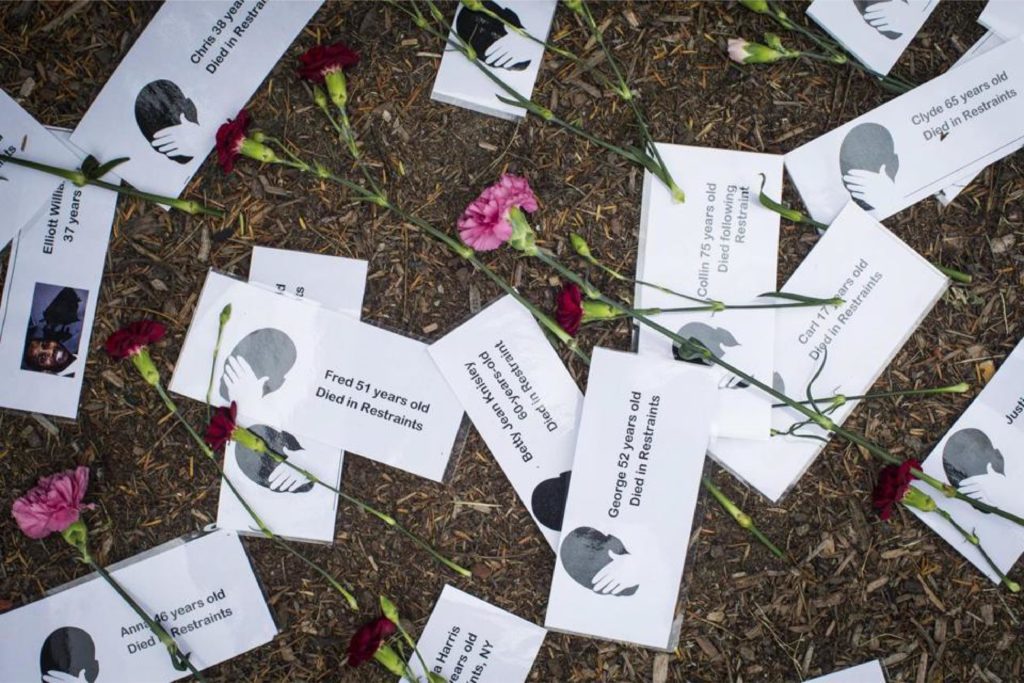There were many moments that lead me to my thesis topic. It did, however, come down to one short news article, and one evocative picture.

In the hands of the 150 people gathered in front of the Boston Globe were the usual accouterments at a protest – placards, bullhorns, and leaflets. Today they also carried flowers and small pieces of papers, each paper with a name of a psychiatric patient and how they had died in police custody or a psychiatric hospital. The Globe had just published ‘The Desperate and the Dead,’ an investigative series on the closing of state psychiatric hospitals and how gaps in mental health care affect families of those living with mental illness. The report detailed the failures of mental health treatment, yet nonetheless, the crowd was there in protest. The protests were in response to the Globe’s editorial choice to link violence and mental illness. The Globe’s investigative team chose to frame the story of psychiatric facilities as not just a public health concern, but a “public safety crisis [of] scores of murders by disturbed people […]” – that Boston was being confronted by “a tidal wave of mentally ill people.” This story revealed what many who live with mental illness can attest to – that stigma, ignorance, and oversimplification about the complexities of mental illness often exist because of media coverage. The protest also highlighted how analysis of broken systemic issues ignores the people experiencing those systems first hand. Addressing systemic issues in treatment does not address stigma or its root causes – fear, ignorance, even hatred of those who have a mental illness. Like other wicked problems, the surface of what we see as a system issue is just the start of understanding the complexity of the problem.
It was the photo that accompanied the article that got me – the flowers and words, a makeshift memorial to the dead, a ‘concrete human moment’ that led me to this thesis. I was struck by the ages and the cause of death scattered among the flowers. Who were these people? What were their stories? What had happened to them? Would history remember them? I had initially explored stigma and government as a thesis topic – why so many Americans have such a negative view of public sector employees – but here was a new angle about government and an unsettling feeling that in this case, it had failed its citizens somehow. The last line of the Globe article haunted me for what it said about the system of healthcare:
“There is no system,” said Joanne Grady of Duxbury. “It’s broken.”
This thesis became an exploration of how to create an alternative system of care for mental health – and what the role of design is to make this vision become a reality.